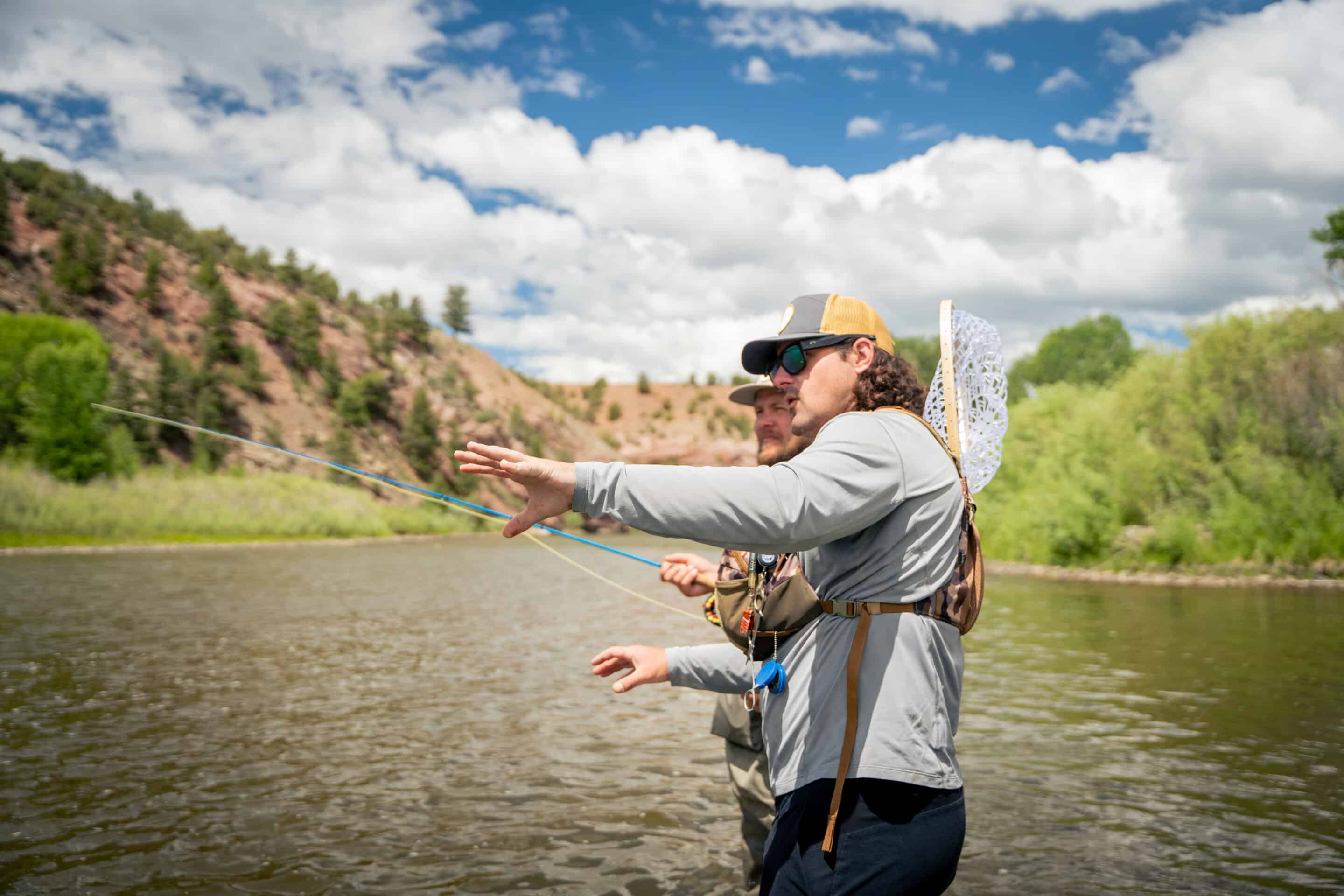//Elise Lopez looks out her kitchen window after finishing up a custom jewelry order on Nov. 13. Photo by Polina Saran | [email protected]
Elise Lopez sat in what she calls her special chair—a mid-century, wicker barrel back—in the middle of her living room. The soft fall afternoon sun streamed in the windows, hitting the leaves of a five-foot-tall Monstera plant. Her four rescue dogs Luna, Nimbus, Zia and Remington are patiently strewn across her two couches. Any other day, she might be riding around town on her motorcycle or working at her kitchen corner jewelry-making station.
I asked Lopez a question I often ask myself: “Do you have anything you want to do before your disease gets worse?” As I explained my question, tears welled in Lopez’s eyes.
“Everything. I want to do everything before I can’t—sorry,” Lopez said, wiping tears from her eyes. “I feel like that’s why I push myself so hard because I don’t know how much longer I’ll be able to do anything. My body’s only going to get worse, which is scary because I feel like it’s already so bad. I don’t want to get old because I know it’s going to suck.”
Lopez and I are two of the approximately 300,000 children in the United States who have been diagnosed with Juvenile Rheumatoid Arthritis, also known as Juvenile Idiopathic Arthritis. The autoimmune disorder refers to a group of conditions involving joint inflammation that first appears by 16 years old. There are seven types, each with its own set of signs and symptoms. The exact cause of the disease is unclear, but there is evidence that it can be genetic or triggered by exposure to certain environmental factors. The condition is chronic, meaning it can last months or years. Sometimes symptoms disappear after treatment, which is called remission. Remission can last months, years or a lifetime. In fact, many children with JIA eventually have full remission without any permanent joint damage.
Some, like Lopez and I in our mid-20s, aren’t so lucky. Even into adulthood, we have not outgrown the childhood diagnosis, which makes us more susceptible to infections, permanent joint damage and co-existing autoimmune diseases. But even aside from these comorbidities, the arthritis itself can cause debilitating fatigue and pain.
“My arthritis affects every aspect of my life,” Lopez said. “I had a hard time accepting that I was sick and I still do. And there are days, especially when I’m feeling not great physically, that I realize how much it does affect me. Sometimes I can’t even leave the bed and brush my teeth or braid my hair.”
That’s not to mention the emotional and financial fallout. Increased pain means having to abandon some of the things you love most in life. You begin to resent your body as new diagnoses pile up. Doctor visits come frequently, and so too do the bills. Insurance premiums skyrocket and prescription prices are out of control. Medical professionals often reject your concerns.
“There are good people in the medical system, obviously, who care and want to hear,” Lopez said. “But I feel like—at least in my experience, especially being younger—I’m second-guessed. My grandma has taught me to speak up for myself—she has illnesses too—so she’s been teaching me how to speak up for myself and be my own advocate, which I’ve learned that if you’re not, nothing will happen.”
That’s the thing about invisible disabilities: They’re easy to dismiss. And that denial comes from all sides. It’s the doctor who doesn’t believe your pain exists, the person who yells at you for using a handicapped parking spot, or the suggestions from strangers to “just do some yoga!”
“I’ve definitely experienced people not believing—or at least I perceive that they don’t believe—my pain,” Lopez said. “I’ve gotten comments from people being like, ‘Oh, [but] you can ride a motorcycle’ or ‘You can handle tattoos.’ That’s not even a comparison. People do definitely minimize your disability because they can’t see it. And I look like a normal freakin’ person, [but] my body’s not [normal].”
Those minimizing comments can weigh on you, especially when you’re already grappling with losing physical autonomy. When you’re not well enough to be “normal,” but don’t look sick enough to fit into the disability space, it can feel like you have no community. This disability imposter syndrome is a well-documented phenomenon among those with invisible chronic illnesses. As the disease progresses, people with arthritis increasingly have to rely on others for help.
“I’m a prideful person,” Lopez said. “It’s probably not good how prideful I am, but this disease has taken a huge part of me away. I have to ask for help now a lot of the time [with] opening jars or brushing my hair, and I used to never have to do that. Last night, I had to ask for Kelly’s [Lopez’s partner] help to bend some metal, and I have never had to ask for him to help with any of my jewelry. I [was] kind of disappointed in myself because I didn’t do this whole ring. But all he did was just bend it a little.”
As her disease progresses, it chips away pieces of who Lopez is. But she still continues with her jewelry making and motorcycle riding, despite the pain both activities cause her. She said she tries to squeeze in as many of her passions now as she can because of the unknowns in her future.
“I would rather be doing something that I enjoyed and hurting than doing something that I hated and hurting,” she said.
That thought is something I’ve struggled with. I’ve had to give up snowboarding because of my knees. I struggle with washing dishes and opening Tupperware. I feel like I’ve also lost so much of who I am to being disabled. I floundered writing this story, striking a balance between doom and gloom and appreciation of the common illness that makes us both aware of our own mortality.
When I told Elise I was having a hard time finding the right tone because I didn’t want it to be too dismal, she sent me a voice message.
“I don’t know, [these illnesses] are sad and they are depressing,” she said. “But there’s also this small glimmer of good—having to intentionally live slow, and appreciate the small things.”
Video below by Polina Saran. Interview by Madison Lauterbach.
Enjoyed this video? Help us keep the lights on! Supporting local press ensures the stories you want to read keep coming, become a member for free today! Click here.





0 Comments